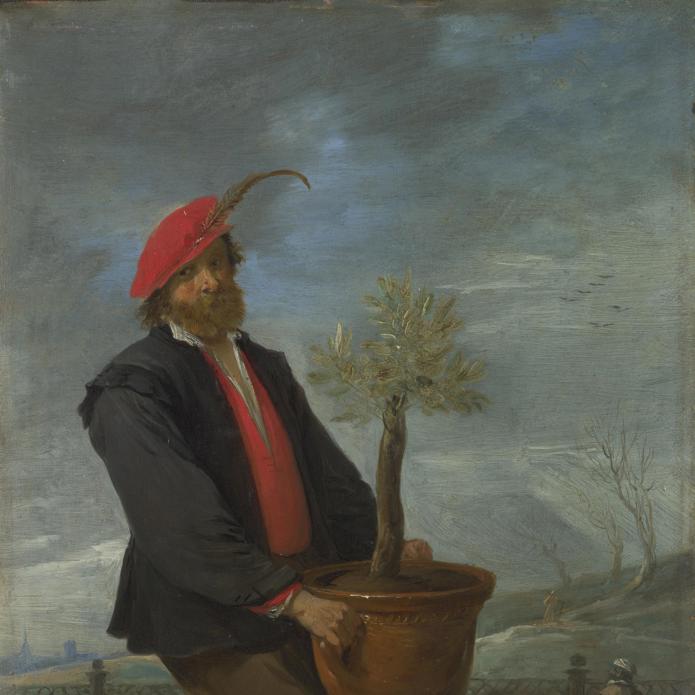David Teniers the Younger, 'Winter', about 1644
About the work
Overview
Teniers brings the cycle of the seasons full circle – and his series of paintings of the seasons to an end – with an old man representing Winter. Wrapped in velvet and fur, he hunches over to warm his hands at a brazier. His face is lined and wrinkled, his beard long and frosted with white. But his cap with its fur wings gives an impression of speed and strength, like a winter wind.
At first the background seems to suggest a grey walled room with a stone floor, but the misty figures low down are a small, monochrome skating scene. The old man’s chair tips slightly sideways – he is perhaps on a path at the side of a frozen pond.
Key facts
Details
- Full title
- Winter
- Artist
- David Teniers the Younger
- Artist dates
- 1610 - 1690
- Part of the series
- The Four Seasons
- Date made
- about 1644
- Medium and support
- oil on copper
- Dimensions
- 22.2 × 16.2 cm
- Inscription summary
- Signed
- Acquisition credit
- Bought, 1871
- Inventory number
- NG860
- Location
- Not on display
- Collection
- Main Collection
- Previous owners
Provenance
Additional information
Text extracted from the ‘Provenance’ section of the catalogue entry in Gregory Martin, ‘National Gallery Catalogues: The Flemish School: circa 1600–circa 1900’, London 1986; for further information, see the full catalogue entry.
Exhibition history
-
2011Winter Märchen: Winter-Darstellungen in der europäischen Kunst von Breugel bis BeuysKunsthistorisches Museum Wien18 October 2011 - 8 January 2012Kunsthaus Zürich10 February 2012 - 29 April 2012
Bibliography
-
1986Martin, Gregory, National Gallery Catalogues: The Flemish School, circa 1600 - circa 1900, London 1986
-
2001
C. Baker and T. Henry, The National Gallery: Complete Illustrated Catalogue, London 2001
About this record
If you know more about this painting or have spotted an error, please contact us. Please note that exhibition histories are listed from 2009 onwards. Bibliographies may not be complete; more comprehensive information is available in the National Gallery Library.
Images
About the series: The Four Seasons

Overview
This series of four small paintings is an allegory of the seasons: spring, summer, autumn and winter have been given human forms that embody the essence of each. Spring is a gardener carrying a tree to plant in a formal garden; Summer is a peasant tying up a sheaf of corn; Autumn is a drinker who raises a glass of wine; and Winter is an old man wearing a fur cap and mantle, warming himself near a brazier.
Strongly influenced early in his career by the Dutch artist Adriaen Brouwer, Teniers became the most famous painter of peasant life of his day, rivalling Brouwer’s rowdy, raunchy tavern scenes full of larger-than-life characters.
























